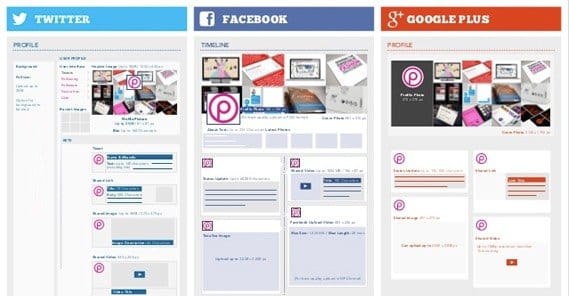Is It Possible to Get Steady Traffic and Income Without SEO?

Look, I get it. SEO is a lot of work. There are a million different factors you have to keep in mind at all times. On top of that, the rules are always changing, with the arms race between black hats and Google. One day you might happily be building links only to find your method penalized the next. And yeah, maybe you should have seen it coming, but you can’t always see everything coming. Even the best well-intentioned sites get hit from time to time. It’s just the nature of the game.
So why not skip the SEO? There has to be a way to succeed without it, right?
The Case for SEO
I’m going to start by saying yes, you can run a website without SEO. If you do things right, you can even run a successful site without SEO. However, there are two things to say as huge caveats to this.
- A website without SEO is going to be a lot of work and very expensive.
- You’ll never be able to completely avoid SEO, as many principles for SEO are required for alternative methods as well, or are simply tenets of modern communication.
For example, do you proofread your content before you post it? Typo-free content is an SEO factor. Do you break up your content into paragraphs with headings, subheadings, and bullet points? Readability is an SEO factor. Does your site have easy internal navigation? That’s an SEO factor. A lot of SEO is just basic common sense.
SEO is a way to turn work into profit without the investment of money. It’s the same dichotomy you find everywhere. You can take the time to do something without spending money on it, or you can spend money to save the time. The trick is to find growth hacks that are cheap in both time and money for big results, and to learn where to most effectively spend your money.
SEO and non-SEO growth and promotion strategies are two sides of the same coin. You can make do with just one, but by leveraging both, you can have more growth faster. So keep that in mind while you read the rest of this post; ignoring SEO is probably holding you back.
What follows are a series of methods you can use to get traffic to your site without the typical actions we associate with SEO. That means no real attention paid to keyword research, no meta data optimization, and no attention paid to Google’s organic search results.
One problem you’ll face is that of links. SEO is all about getting Google to rank your site highly for queries related to your content. One of the biggest factors influencing your search ranking is the number and quality of links pointing at your site. However, every single traffic generation method below relies on a link to your site from an external site. This means one of the core elements of SEO is also one of the core elements of non-SEO marketing. I am intentionally limiting our definition of SEO to one that doesn’t include links so we can discuss non-SEO methods without avoiding links entirely.
Frankly, there’s no way to get an active, visited, and money-making site without links. Sooner or later, you need a link, if for no other reason than that people won’t be able to visit your site without one.
With all that said, let’s take a look at the methods.
1: Paid Advertising
The first and most obvious alternative to organic traffic generation via SEO is paid advertising. You can set up your site, then go to Google and Facebook and pay for ads that send people to your site. Ads are links, of course, but they aren’t counted towards organic search ranking for a number of reasons.
The biggest advantage to paid ads is the guaranteed traffic. You know you’re getting traffic, you can see tangible numbers through the analytics you get, and you can easily measure the cost versus the profits of your paid ads.
You also get a lot of targeting options, particularly with Facebook. You’re able to carefully narrow your audience so you’re just reaching the people you want to reach. You can simultaneously lower your ad costs and raise your conversion rates through careful application of targeting factors.
There are, however, two major downsides two paid advertising as your sole traffic generation method. The first is that you can easily waste money with poor ads, poor targeting, or both. If you don’t have data from organic traffic – from SEO – you don’t have a foundation to use to start your ads. You have to play around until you find something that works, and that will cost money.
The second drawback is that you have to be paying money to make money. The moment you stop paying, either because your budget runs out or your wallet runs out, your traffic slows to a trickle. You may have picked up a few users, but you won’t have steady traffic if you’re not making steady payments.
This is why paid advertising is generally used in conjunction with SEO. SEO starts slow but builds and snowballs over time. Paid advertising gets you an immediate kickstart and can fill the gap until your SEO has reached snowball levels. They compliment one another.
2: Social Media Marketing
Organic social media marketing is a sort of half way stop between SEO and paid advertising. It takes many of the techniques that make SEO work – that make your content appeal to users – and applies them directly. You’re networking directly with your audience, even more so than your website, and you have to be sensitive to what they want. At the same time, you’re gathering data about your users without having to pay for it, and sending traffic to your site from your social profiles. You can use this information to more accurately target your paid advertising.
The tricky part is that social media marketing is an entire huge industry, and it’s going to take as much effort to learn and master as SEO would, if not more. It’s not easy, and it’s not cheap to outsource, and it’s of limited utility if you aren’t also working on other ways of generating traffic. After all, you have to get people to follow your social profiles, and those people have to come from somewhere. There’s a cyclical feedback loop between traffic on your site and traffic on your social profiles, and neither will kick off the other without input from an outside source.
Of course, to fuel a good social media presence, you need to be producing high quality content on a regular basis, published to your website. That, my friends, is called content marketing, and is a big part of SEO. Once again, we’re back to that issue.
3: Influencer Marketing
Influencer marketing is a variant of social media and content marketing. Rather than directly trying to grow your own social media profiles simply with the power of your content, you get others involved. Specifically, you identify the most influential people in your industry and you try to get them to recommend you.
The general process for influencer marketing begins when you look on Facebook and Twitter for the people with the most followers and activity in your industry. You’re not looking for the Biz Stones and the Elon Musks, though; they’re far above you and are pretty unlikely to give you the time of day. No, you’re looking for mid-tier marketers who are large enough to benefit you but small enough to pay attention to their notifications. You can work your way up through social circles until you get the attention of those top-tier juggernauts later.
Of course, when you’re influencer marketing, you need to have something to draw their attention. Generally, this means producing high quality content and linking to something of the influencer’s in it. This gives them something of value to share with their audience, as well as the incentive to do so: it links to them and benefits them. Links are like currency in the marketing world, after all.
The problem with influencer marketing is that it’s not really stable. You can’t label it a stable traffic generation strategy because you never know when an influencer is actually going to take action. It’s hit or miss whether they promote you and whether their audience clicks through, so you need to be sharing enough volume with enough influencers to make up for the inconsistency, and then you’re just falling back into volume-based content marketing.
4: Guest Posting
Guest posting is another content-based strategy for drawing in traffic, but rather than creating content for your own site, you’re creating content for another. It’s similar to influencer marketing, in that you’re sharing content with influencers in hopes of getting their audience to come visit your site. The difference is, rather than publishing the content on your own site, you’re publishing it on theirs.
The process for guest posting is simple. Find influential sites in your niche, look for “write for us” pages, and apply to become a contributor or guest poster. Often, you will need to have some credentials, which means some decent content on your site and possibly a bit of a reputation. Either way, you get in, you write decent content for those sites, and you link back to your own.
Webmasters have been burned by this strategy before, and Google is very skeptical of the value of guest posting links. The value will not really be in the SEO value of the links, which is good because you’re trying to ignore SEO. Instead, it will come from the audience that visits your site through those links, and from the brand name recognition that comes with spreading your name around attached to quality content.
5: Offline Marketing
If you’re “lucky” enough to have a physical storefront, you can probably do okay with a website without any of the above. You just have to invest in putting your website URL on all of your in-store and print advertising. If you don’t have a storefront, you can still get website visitors from offline advertising, you just need to do it a little differently. Mass mailers might work. Radio ads can work, if you have a suitably radio-friendly product. Print ads in magazines, newspapers, and business cards are all viable options. TV ads can work, though they’re quite expensive.
The problem with offline marketing is that it’s very difficult to track and analyze in terms of viability and conversion rates. You have little to no way of knowing what visitors came from offline sources and how well they convert, without referral data. It’s also likely to have very low conversion rates and thus low returns on investment.
6: Community Commenting
A final strategy involves infiltrating online communities and using a personal presence to advertise your site. By “communities” here I mean things like Facebook groups, LinkedIn groups, and blog comment sections.
The general idea is to find communities that are relevant to your business and start participating in them. Be a user, not a brand face, and you can convince people you’re there to be a part of the community, not to use them for advertising. Then, right when they grow complacent, it’s your time to strike!
By strike, I mean link to a piece of valuable content that is currently under discussion in the community. You might have to bring up the topic, or monitor an ongoing topic to create relevant content on the fly, though. The key is to be providing value to the conversation, not just a link for the sake of a link. It’s tricky, and you’ll probably find a few posts removed, a few comments deleted, and a few communities closed to you before you figure it all out.
Put together, all six of these strategies combined can help you get steady traffic and income from a website without a focus on SEO. Of course, you’ll be more or less accidentally building an SEO presence while using them, so you might as well just go all the way.
 ContentPowered.com
ContentPowered.com










